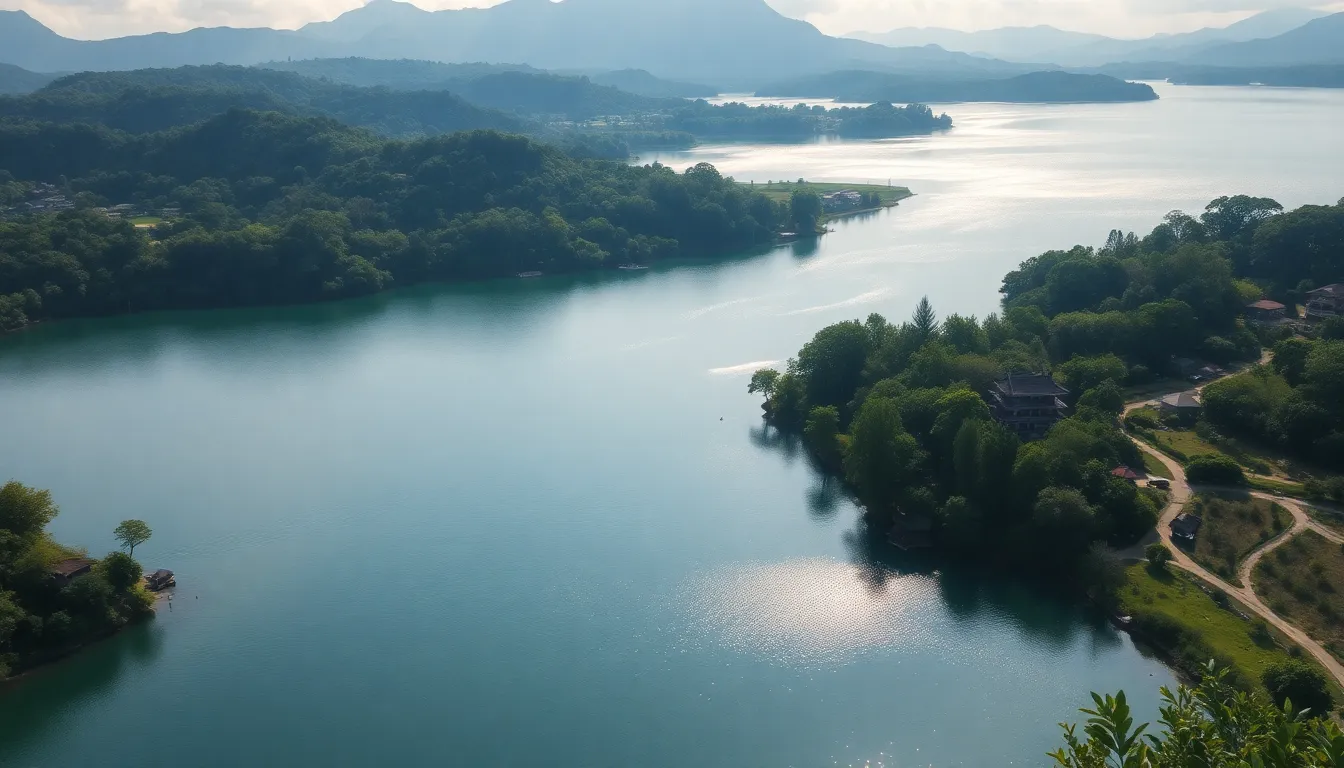Table of Contents
ToggleLake Yiganlawi has long captured the imagination of adventurers and nature lovers alike. Nestled in its serene surroundings, this body of water has witnessed countless stories and mysteries. But one question lingers: has it ever dried up?
Imagine a lake so majestic that it could rival the most dramatic soap opera plot twists. One moment it’s overflowing with life, and the next, it might just pull a disappearing act worthy of a magician. While many lakes have faced the harsh realities of climate change and drought, Lake Yiganlawi’s story unfolds with a unique blend of history and intrigue. Join the journey to uncover the truth behind this enigmatic lake and discover if it ever bid farewell to its shimmering waters.
Overview Of Lake Yiganlawi
Lake Yiganlawi is a notable body of water, located in a region characterized by unique ecological features. This lake attracts researchers and explorers with its intriguing past and fluctuating water levels. Many locals recount stories of its dramatic changes, often linked to varying climate conditions.
Historically, it has undergone significant transformations, reminiscent of soap opera scripts. The lake’s size and depth have fluctuated over the years due to several factors, including precipitation patterns and temperature variations. Reports suggest that periods of drought have impacted its water levels but complete drying has not been well-documented.
Scientific studies reveal that the ecosystem of Lake Yiganlawi plays a crucial role in local biodiversity. This body of water supports various species, both aquatic and terrestrial, contributing to a balanced environment. With ongoing environmental monitoring, data indicates that climate change poses challenges, but resilience within the ecosystem remains evident.
Local narratives often highlight community ties to Lake Yiganlawi, emphasizing its importance in cultural traditions. Stories shared among residents reveal a deep connection, enriching the lake’s historical significance. Investigating the current state of the lake could provide insights into future conservation efforts, ensuring its survival amid changing climate patterns.
Historical Context

Lake Yiganlawi has a rich history marked by fluctuating water levels and ecological significance. Understanding its past offers valuable insights into its current state.
Formation Of Lake Yiganlawi
The origins of Lake Yiganlawi trace back to geological events that shaped the landscape. Formed through glacial activity and sedimentation, the lake developed a unique topography. Its structure is a result of natural processes, allowing it to collect rainfall and runoff. Over centuries, the lake’s basin evolved, creating a habitat rich in biodiversity. Various geological studies indicate that these shapes and features have played a crucial role in its water dynamics.
Previous Water Levels
Documents from local residents detail significant variations in the lake’s water levels over time. Historical records show that the lake expanded significantly during wet periods, while droughts caused temporary declines. These fluctuations affected the surrounding ecosystems and communities that rely on the lake. Although there have been reports of reduced water levels, full desiccation has not been confirmed. Observations highlight that drought conditions have posed challenges but not absolute drying, making Lake Yiganlawi’s narrative one of resilience amid change.
Factors Influencing Water Levels
Lake Yiganlawi’s water levels fluctuate due to various factors, critically influencing its health and ecosystem.
Climate Change Impacts
Climate change substantially affects Lake Yiganlawi’s water levels. Changing precipitation patterns cause variations in rainfall, leading to dry spells or flooding. Increased temperatures result in higher evaporation rates, which can lower the lake’s water volume. Research indicates that shifts in climate are making these fluctuations more pronounced. Drought conditions can diminish water supplies, stressing local flora and fauna. Over time, these climatic changes challenge habitats and increase competition among species for resources.
Human Activities
Human activities significantly impact Lake Yiganlawi’s water levels. Urban development near the lake can lead to increased water runoff and pollution. Agricultural practices, particularly irrigation, affect the water table, decreasing the lake’s water levels during drought periods. Industrial activities introduce contaminants that alter water quality and disrupt local ecosystems. Local communities also shape water management practices, influencing how water resources are utilized. Balancing development and conservation remains essential for the lake’s future sustainability.
Evidence Of Droughts
Droughts have significantly influenced Lake Yiganlawi’s history, leaving traces in both local narratives and scientific observations.
Historical Records
Local residents documented fluctuations in the lake’s water levels over the years. Historical accounts indicate periods of severe drought contributing to notable declines. In the 20th century, reports highlighted low water levels during extended dry spells, impacting surrounding ecosystems. Community recollections shed light on vast changes, illustrating how the lake’s size transformed during varying weather conditions. Ancients also spoke of a complete evaporation event, although concrete evidence remains scarce. Preservation of these records serves as an essential resource for understanding the lake’s past.
Scientific Studies
Research conducted near Lake Yiganlawi provides invaluable data regarding its hydrology. Studies show correlating patterns between precipitation and water levels, indicating drought periods’ direct impact. Analysis of satellite imagery supports claims about drastic changes over decades, revealing a concerning trend in evaporation rates. Researchers observed increased temperatures contributing to water loss, highlighting the influence of climate change. Several scientific papers emphasize the importance of ongoing monitoring to draw accurate conclusions about long-term drought conditions and their effects on nearby ecosystems. Collaboration between scientists and locals often enhances understanding of environmental shifts.
Current Status of Lake Yiganlawi
Lake Yiganlawi continues to capture attention due to its fluctuating water levels. Recent assessments show that water levels have varied greatly, often influenced by seasonal rainfall and drought cycles.
Recent Water Levels
Current data indicates that Yiganlawi’s water levels experience significant seasonal changes. Early summer often brings an increase due to rainfall, while late summer and autumn frequently lead to reductions. Observations reveal that levels reached a peak of 5.2 meters in March 2023 before declining to 3.7 meters by October 2023. Such fluctuations impact local habitats and biodiversity. Several studies confirm that these patterns correlate closely with regional precipitation trends. Understanding these changes is vital for effective resource management.
Conservation Efforts
Conservation initiatives surrounding Lake Yiganlawi aim to enhance ecological health. Local organizations collaborate with environmental agencies to monitor water quality and implement protective measures. Efforts focus on restoring natural habitats and reducing pollution from nearby agricultural practices. Community involvement plays a crucial role, with residents participating in cleanup campaigns and awareness programs. Recent projects include the establishment of buffer zones to prevent runoff. Their commitment to sustainability reflects a dedication to preserving the lake’s unique environment for future generations.
Lake Yiganlawi’s story is one of resilience and intrigue. It stands as a testament to the complexities of nature and the impact of climate change on local ecosystems. While it has experienced significant fluctuations in water levels over the years, complete drying remains a debated topic with limited documentation.
The ongoing collaboration between scientists and the local community highlights the importance of preserving this unique environment. As Lake Yiganlawi continues to evolve, its future depends on the balance between development and conservation efforts. The lake not only enriches the region’s biodiversity but also serves as a cultural cornerstone for the communities that cherish it.




